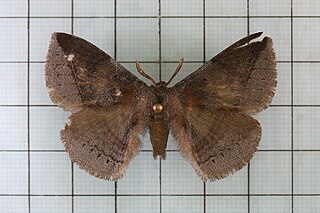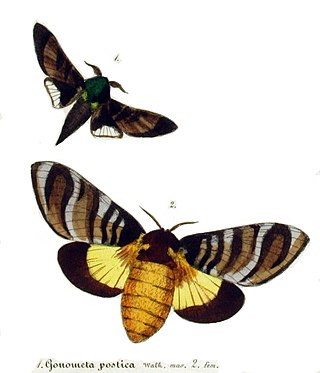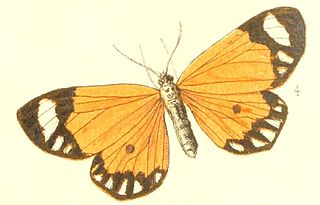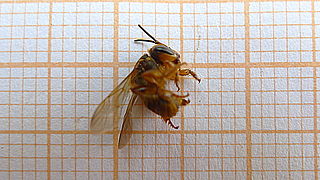
La Chorrera is a city and municipality in central Panama, located about 30 km south-west of Panama City. It is the capital of the province of Panamá Oeste and one of the larger cities in the country and is fond of the phrase "La Bella, Enamoradora y Querendona, La Gran Chorrera", reportedly as a tribute to its beautiful women, kind people, and happy nightlife.

La Chorrera is a town and municipality in the southern Colombian Department of Amazonas. The population is largely engaged in agricultural production, hunting, fishing, and banana and cassava growing. The municipality was once a notable site for rubber production: exploited by the Peruvian Julio César Arana, who owned the Peruvian Amazon Company at the turn of the 20th century, north of the Putumayo River. The territory has an area of 12,670 km².

Peripsocidae is a family of Psocodea belonging to the suborder Psocomorpha. Members of the family are characterised by their absence of an areola postica in their wings. Many of the recently described genera are closely allied to Peripsocus. The family includes more than 300 species.

Lachesillidae is a family of Psocodea belonging to the suborder Psocomorpha. Members of the family are characterized by a rounded, free areola postica in their wings. Males have diverse sclerotized genitalic structures. The family includes more than 400 species, most of them in the genus Lachesilla.
Elipsocidae is a family of Psocodea belonging to the infraorder Homilopsocidea. Members of the family have a free areola postica. Many species are apterous. The family includes about 130 species in more than 30 genera.
La Chorrera Airport is an airport serving the town of La Chorrera in the Amazonas Department of Colombia.

The Chorrera culture or Chorrera tradition is a Late Formative indigenous culture that flourished between 1300 BCE and 300 BCE in Ecuador. Chorrera culture was one of the most widespread cultures in pre-Columbian Ecuador, spanning the Pacific lowlands to the Andean highlands, and even into southern Colombia.

La Chorrera is a district (distrito) of Panamá Oeste Province in Panama. The population according to the 2000 census was 124,656; the latest official estimate (2019) is 199,708. The district covers a total area of 770 km². The capital lies at the city of La Chorrera.
Elena Postică is a historian from the Republic of Moldova.
Chorrera idiotes is a species of snout moth. It was described by Harrison Gray Dyar Jr. in 1914. It is found in Panama.

Ganisa postica is a moth of the family Eupterotidae described by Francis Walker in 1855. It is found in India, Myanmar, Sri Lanka and Taiwan.

Orgyia postica, the cocoa tussock moth or hevea tussock moth, is a species of moth of the subfamily Lymantriinae of the family Erebidae found in the Oriental tropics of India, Sri Lanka, Myanmar, Borneo, Java, New Guinea, and Taiwan. It was described by Francis Walker in 1855.
Chorrera is a genus of snout moths. It was described by Harrison Gray Dyar Jr. in 1914.
Chorrera extrincica is a species of snout moth in the genus Chorrera. It was described by Harrison Gray Dyar Jr. in 1919 and is found in the United States on the Florida Keys and Cuba.

The Torreón de la Chorrera, or to give it its full name, Fuerte de Santa Dorotea de la Luna de la Chorrera, was completed in May 1646. The tower stands on a coral islet only a few metres from the shore and not much larger than the tower itself. The tower's purpose was to impede the entry of enemy ships into the mouth of the Almendares River. The British damaged and captured the tower when they took the city in 1762, after which the tower was rebuilt in its present form. Today, the tower contains a restaurant. In 1982, the Torreón was inscribed on the UNESCO World Heritage List, along with other historic sites in Old Havana, because of the city's importance in the European conquest of the New World, its fortifications, and its unique architecture.

Gonometa postica, known commonly as the African wild silk moth, burn worm, and brandwurm, is a large species of African moth belonging to the family Lasiocampidae. The genus Gonometa boasts some very large moths and larvae; Gonometa sjostedti from Africa has a larva 16 centimeters long, for example. Most of the Lasiocampidae are highly sexually dimorphic. In G. postica the forewing of the male measures 21–25 mm and of the female 35–42 mm.

Mimaletis postica is a moth in the family of Geometridae first described by Francis Walker in 1869.
Machimia chorrera is a moth in the family Depressariidae. It was described by August Busck in 1914. It is found in Panama.
Barrio Colón is a corregimiento within the city of La Chorrera, in La Chorrera District, Panamá Oeste Province, Panama with a population of 33,214 as of 2010. Its population as of 1990 was 20,746; its population as of 2000 was 26,818.

Scaptotrigona postica is a species of stingless bee that lives mainly in Brazil. It is a eusocial bee in the tribe Meliponini. S. postica is one of 25 species in the genus Scaptotrigona and is a critical pollinator of the tropical rain forests of Brazil. They construct their nests in hollowed sections of tree trunks, allowing for effective guarding at the nest entrance. This species shows colony structure similar to most members of the Meliponini tribe with three roles within the colony: queen, worker, and male. S. postica individuals have different forms of communication from cuticular hydrocarbons to pheromones and scent trails. Communication is especially useful during worker foraging for nectar and pollen through the Brazilian tropical rain forests. S. postica is a very important pollinator of the Brazilian tropical rain forests and is widely appreciated for its honey. Stingless bees account for approximately 30% of all pollination of the Brazilian Caatinga and Pantanal ecosystems and up to 90% of the pollination for many species of the Brazilian Atlantic Forest and the Amazon.











